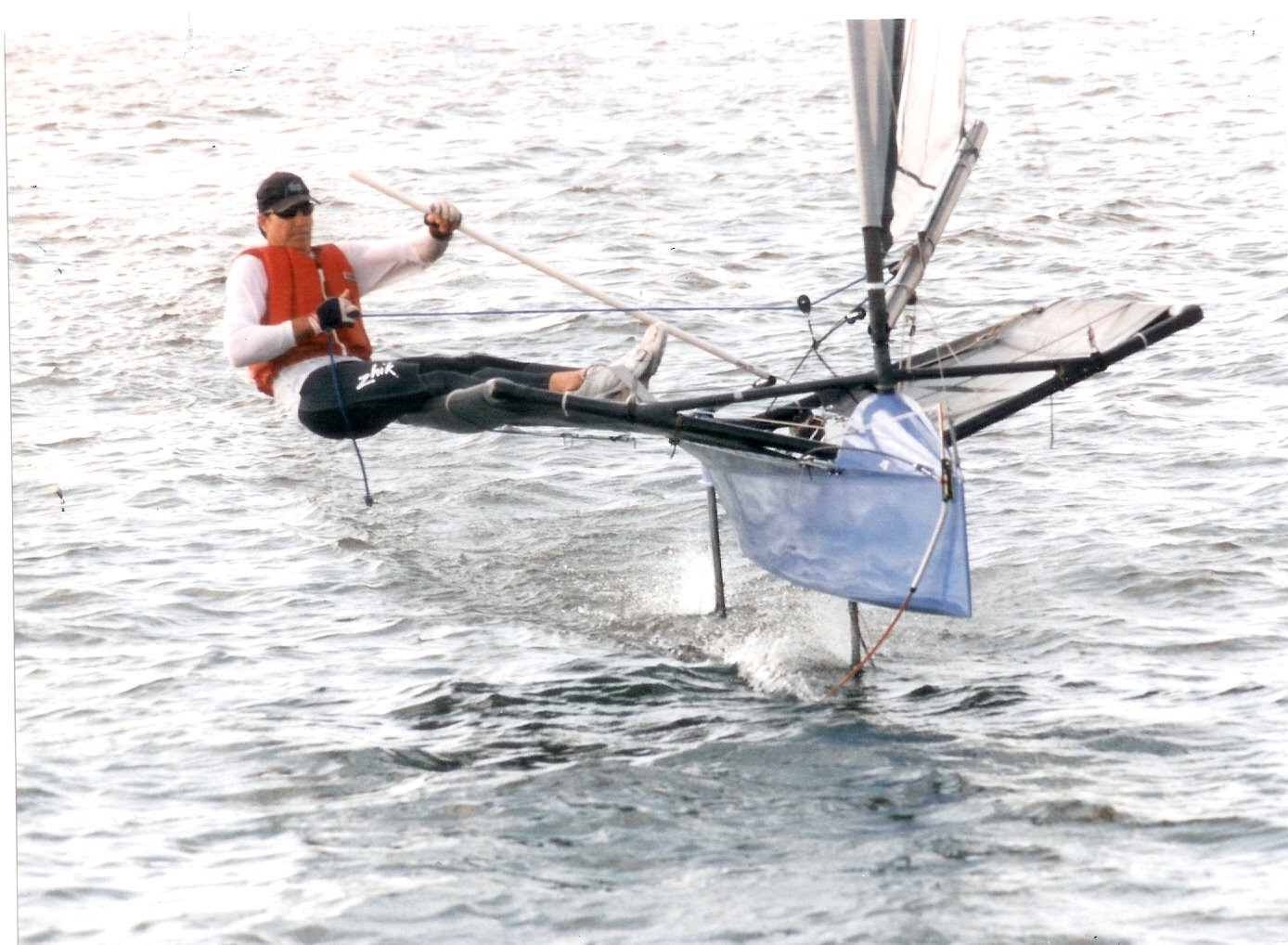What if you scheduled a holiday weekend around some mothing at a venue a number of hours away from your home? What if the breeze is a steady 6 knots? Do you blow off the sailing adventure or do you rig up and sail? What if the weekend happened to be a regatta weekend and the race committee heads out to set the course? If the forecast calls for a steady breeze with nothing over 8 knots, will you be relegated to lowriding or sailing insane angles upwind and down, trying to pump it up and dreading every drop off the foils?
Thinking about the possible "what ifs," and knowing my skill and experience will mean a certain lowriding event, I threw together an alternate set of blades and some old school rigging (2-1 transom sheeting and a block at the back end of the welll replacing the bridle.) Cost was close to nil - I used a busted strut, just having to clean up the bottom. The rudder is a piece of cedar covered with a couple layers of glass. The needed blocks, line, tiller and hiking stick material were laying in the garage from other boats. I had a chance to sail today with the old school foils and found things to be just as I remembered them from the 1970s. A Hungry Beaver (similar to a Hungry Tiger) sailing to weather in 6 knots is a beautiful thing. Smooth tacks with a quick speed build. Tacking angles a tad less than 90 degrees. After about 45 minutes the breeze started to pick up to foilable range and I headed back to the beach to swap out the blades for the foils. It only took a little less than 10 minutes for the change-out followed by a couple of hours in 10-15 knots. A great day. The ride height mechanism is working to perfection. A couple of new delrin bits have reduced slop and the gybes are actually coming along. The telltales seem to help, especially in the low riding conditions. I leave for Harbor Springs a week from today.


















